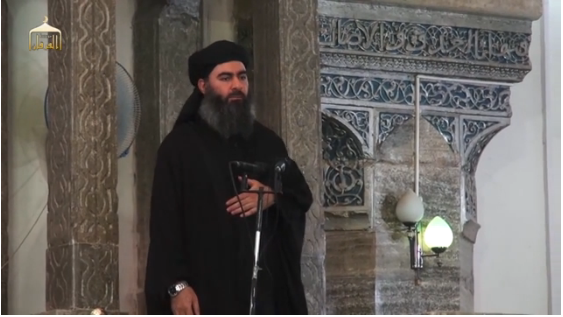- Masked demolishers destroyed the tomb of Jonah in Mosul with sledge hammers.
July 10, 2014
by Kurt Nimmo
The Kharijite fanatics masquerading as Sunni Muslims who have temporarily established a caliphate in Iraq and Syria are now destroying religious antiquities. The Islamic State attack on the holy sites of other religions is reminiscent of the Taliban destruction of 2,000 year old Buddha statues in Afghanistan’s Bamiyan valley in 2001.
The CIA and Saudi Arabia supported the Wahhabist Taliban and have backed the Kharijite IS, formerly ISIS. The U.S. military trained IS terrorists in the art of killing people and blowing things up. The Afghan Mujahideen, many who would ultimately form the Taliban, picked up their sabotage and murder skills at the CIA’s spy training camp in Virginia.
“During five years in power, the Taliban banned nearly the entire spectrum of creativity and performance – including clapping – and destroyed an estimated 80 percent of Afghani cultural heritage, from religious relics to film reels,” notes Colors Magazine.
“By destroying Shia holy sites, ISIS hopes to erase Shia culture from the regions they control and also provoke a response from Iraq’s Shia, which will in turn drive more Sunnis to supporting ISIS,” explains Near East scholar Christopher Jones.
In addition to destroying Shia and Sufi mosques and tombs in its captured territory, the Islamic State has vowed to eradicate important archaeological sites, declaring it “will destroy them and say the Iraqi army bombed these sites.”
Shia mosque in Mosul is destroyed by IS demolition. Photo: Twitter
The area around Mosul where the ISIS land grab began is home to 1,791 registered archeological sites, including four capitals of the Assyrian empire. The city is site to numerous Old Testament biblical battles and, according to Jewish and Christian tradition, was founded by the great grandson of Noah, Nimrod.
Abu Bakr al-Baghdadi, the Caliph with a $6,000 James Bond watch knock-off, went out of his way to visit the Mosul Museum. His henchmen told museum staff the ancient statues there are “against Islam” and vowed to return. The “caliphate’s gauleiters issued a city charter and declared in its Article 13 that ‘false idols’ would have to be destroyed,” Christopher Dickey wrote on Monday.
The IS fanatics have set the bar high. Not only have they announced their intention to destroy all religious and non-religious artwork in Iraq and Syria, but also in Saudi Arabia.
“If Allah wills, we will kill those who worship stones in Mecca and destroy the Kaaba. People go to Mecca to touch the stones, not for Allah,” ISIS member Abu Turab Al Mugaddasi vowed on Twitter last month.
The Kaaba is the most sacred point within the most sacred mosque of Islam, the al-Masjid al-Haram in Mecca, Saudi Arabia.
Muslims consider Jonah a prophet. “One should not say that I am better than Jonah,” Muhammad declared, according to the Sahih al-Bukhari, one of six major hadith collections of Sunni Islam.






